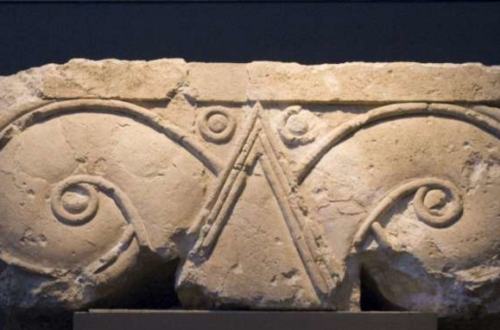Gunnar Heinsohn’s new thesis in contrast to Uwe Topper’s
In November 2013, Gunnar Heinsohn presented his new thesis in English: “The Creation of the First Milllennium”. Since then, the discussion has flared up.
Heinsohn leaves only 230 years in three parallel groups (1-230s, 290s-520s and 700s-930s) in the first millennium AD, all the rest, and that is a total of 700 years, he cuts out as unreal. One asks oneself immediately: Who should have inserted those redundant 700 years in historiography? Leopold Ranke? Or Seth Calvisius? Or Regino of Prüm? And why should he have done so?
A struggle has begun: Gunnar Heinsohn with his incorruptible search for truth against the wanton inventors of centuries that never occurred.
The invention is represented by a well-informed advocate: Trevor Palmer, who published in the last four issues of the journal SIS Chronology and Catastrophism Review (2015, 3 to 2016, 1-3) under the heading “The Writings of the Historians of the Roman and Early Medieval Periods and their Relevance to the Chronology of the First Millennium AD“ the complete proof that no support for the theory of Heinsohn is possible because the entire period is filled with written and consistent evidence. All the emperors from Caesar’s time to that of the Frank bishop Gregory of Tours are watertight. It should be added that with this method the following emperors and popes are even better defended because the network of written documents grows ever stronger, the closer one comes to modern times.
However, it is becoming clear that the traditional sequence of emperors which is undoubted by modern historians, bears witness to a lucid spirit. The accuracy with which the data of governing of the emperors and their meaningful sequence are passed on by historiography is ingenious, to say the least. The dates are almost exactly accurate; differences in the individual narratives amount to just one to three years, which can usually be explained with the different beginnings of the year. It must have been a genius of immeasurable knowledge of all classical literature, a rogue or demagogue or pope whose machination no one has yet discovered. Gunnar Heinsohn has now at least revealed that this conceptual framework of thought cannot be found in the soil and has no correspondence to archaeological findings, indeed that it has become vulnerable by modern archaeological work, and must be refuted.
As a defender of Gunnar Heinsohn one could cite Uwe Topper, who has been sweeping seven centuries between Caesar and Trithemius (1500), albeit with a completely different method, namely using calendar and star observations, by which the emperors from Augustus to Charles IV loose their reality. From now on they belong to the novel of the historians, which does not mean eo ipso that everything that is reported about them was invented. It’s mainly the timetable that is made up.
Heinsohn’s method is different from Topper’s. Heinsohn wants to retain individual packages of the academic chronology and delete others due to the lack of archaeological testimony. Here lies a problem: the chronology stems from the writings of modern historians, the earthen layers, however, are archaeologically (= scientifically) dug out. There is no logical connection between the two employed methods. Over and over again, Topper demands that archaeologists should finally develop their own historical structure, especially a chronology based on their findings. An orientation on literary specifications (as is the practice so far) is unscientific. Since the traditional chronology was made up quite randomly backwards since the Renaissance, it is equally arbitrary to recognize or reject parts of it.
Now once again Toppers thesis briefly summarized: The period between the Last Great Jerk of the globe (650 years ago) and the jerk that occurred before it (obvious by Caesar’s calendar reform) is now estimated at about 1,400 years, but according to astronomical records it is only half as long : about 700 years.
Subsequently, seven centuries have been inserted in this chronology and artificially filled with history. The last buffer of about 300 years (this is based on Illig’s idea) was created in the 16th century retrospectively for the years “614 – 911”. The invention of seven centuries can be demonstrated point by point (for example, the formation of Islam or the final draft of Ptolemy’s Almagest). Frequently, data have been augmented subsequently by the value 1000, both in parchments and on stones. Example: A church building in northern Spain, built 6 – 700 years ago, received a founding document of AD 325, also carved in stone on the church itself. Other frequent insertions are from 300 to 600 years (for example the Persian and the Arabic literary gaps, see Topper 1998, pp. 237 ff).
Since Topper bases his findings on astronomical clues, the picture that emerges is different from Heinsohn’s. The chronology from Cesar to the Renaissance must be recreated completely; dismembering the traditional one and reorganizing it is not the solution.
Toppers thesis saying that between Caesar and the Renaissance only about half of the years are real instead of 1500 so that at least 700 years were inserted, has now been substantiated by several authors, not only by Heinsohn. Unfortunately, they all have in common that they did not detect any explanation as to what could have led to this miscalculation and why it was accepted generally. This remains Toppers personal thesis, largely triggered by Christoph Marx.
New: Heinsohn’s letter to Illig’s 70th birthday explaining the genesis of his new theory
Brand new: Peter Winzeler’s analysis of the two theories




